Drawing From the Depth of Materials Within the Soil of Colonial Violence, Binta Diaw Is Literally Growing New Meaning

05 February 2021
Magazine C& Magazine
5 min read
Contemporary And: Could you tell us a bit about your series Paysages Corporel, in which you draw with chalk on photographs of parts of your body? Binta Diaw: During the pandemic, I have continued to work on this series of pictures and read a lot. The photographs light up my body as a ground of …
Contemporary And: Could you tell us a bit about your series Paysages Corporel, in which you draw with chalk on photographs of parts of your body?
Binta Diaw: During the pandemic, I have continued to work on this series of pictures and read a lot. The photographs light up my body as a ground of resistance, power, and action. I draw traces of colors with symbolic meanings on the photos' surfaces: blue becomes the color of water and red becomes blood or other visceral, organic parts of the body’s innards.
At a time when many bodies are forcibly confined in the restricted spaces of our homes and physically far from nature, I have started to re-examine my inner self and how the human body is reflected in nature. Reading Vandana Shiva’s essays has exposed me to eco-feminist thought. Understanding the importance of always being connected to Earth made me think about body culture, meaning how a body can educate us about caring, about loving ourselves and others.
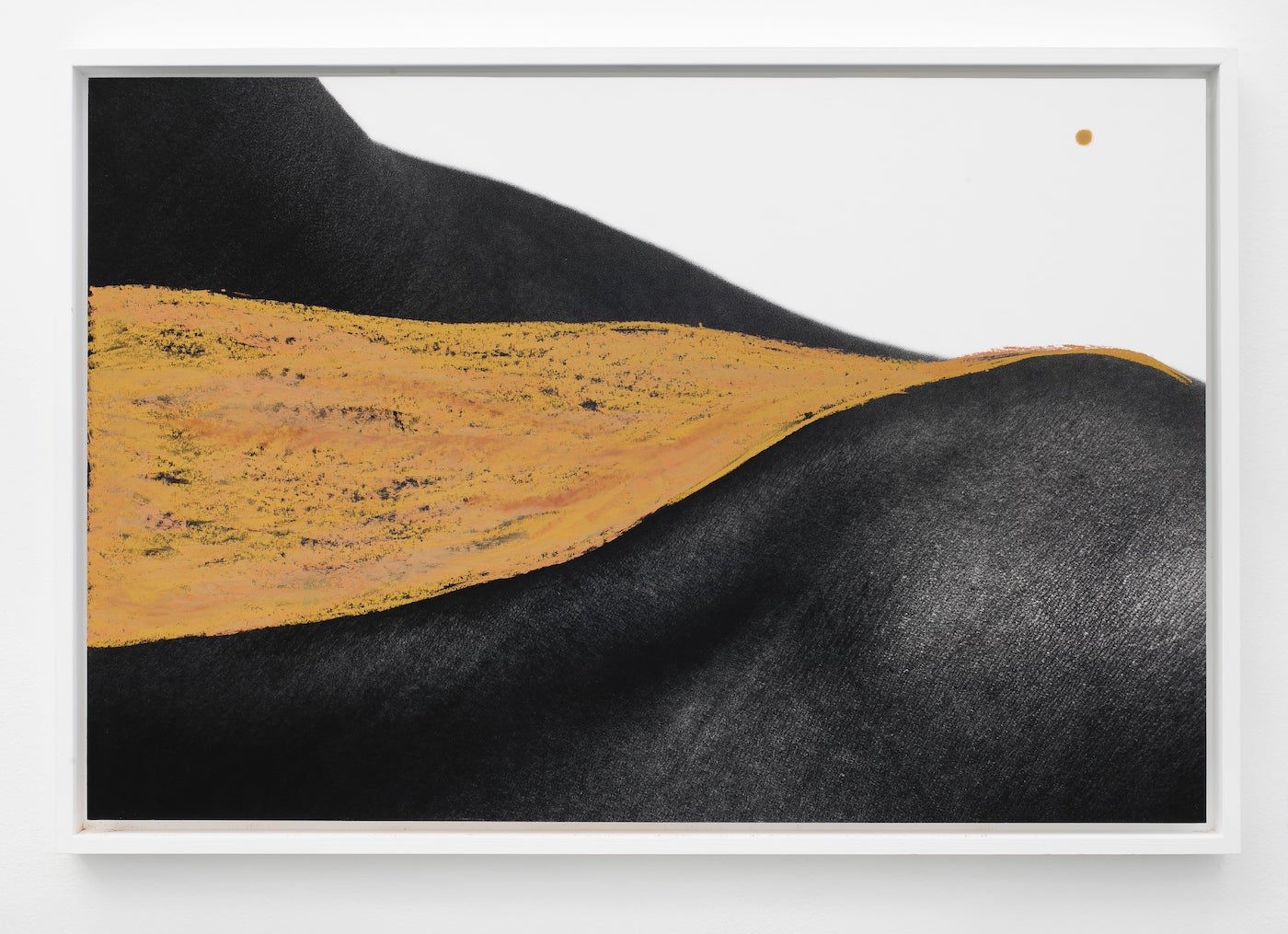
<figcaption> Binta Diaw, Paysage corporel III. Courtesy the artist.
C&: How important is materiality in the aesthetic experience?
BD: In my artistic practice, the symbolism suggested by the use of natural materials is a central point. I think that a certain symbolism can result in a new form of poetics. As a student of sculpture in Milan, I learned that an in-depth knowledge of materials and techniques are essential to give my ideas concrete form.
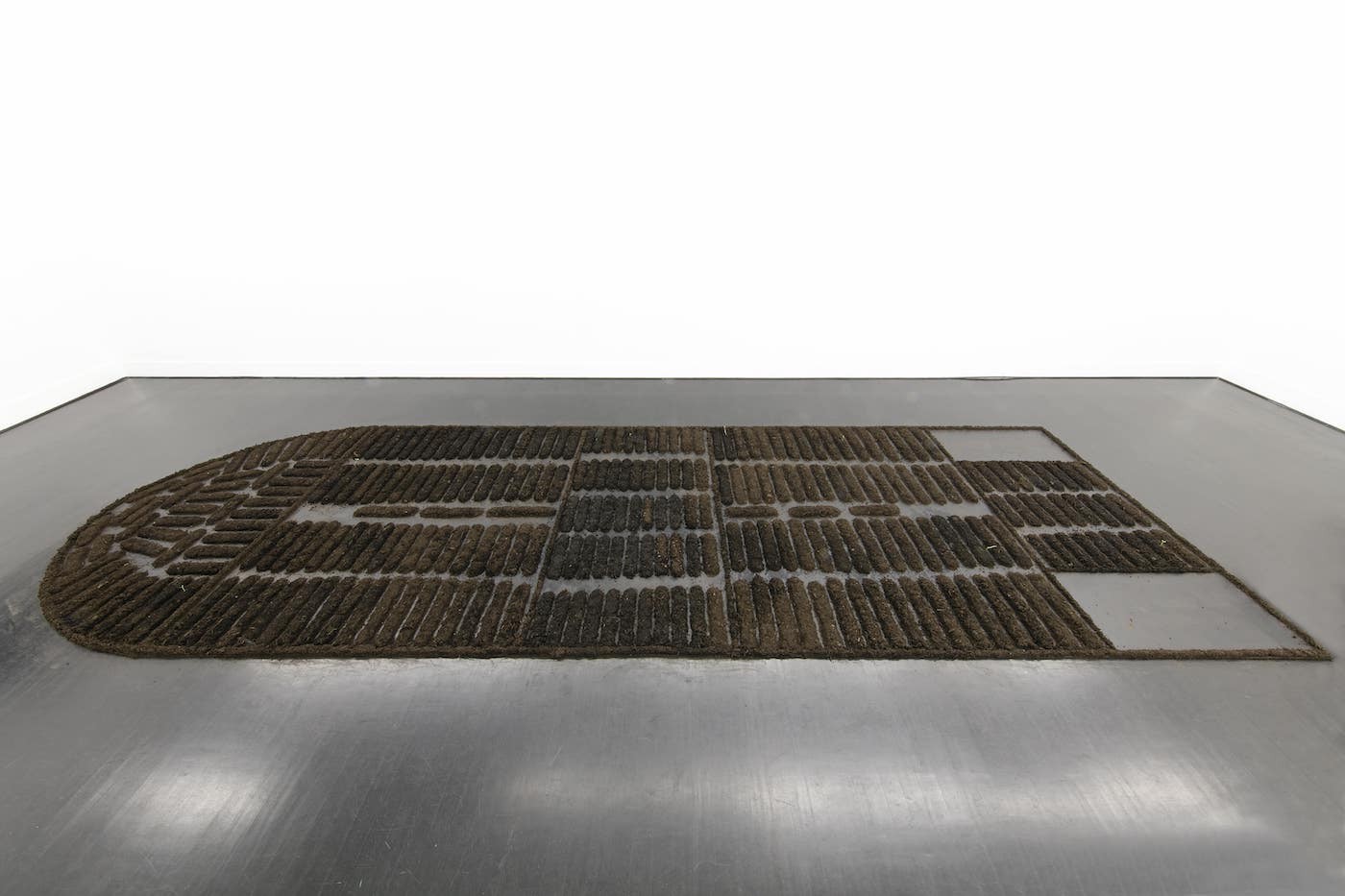
<figcaption> Binta Diaw, Chorus of soil, Installation view. Courtesy the artist.
C&: Such as, for example, in the installation Chorus of Soil.
BD: Yes. Chorus of Soil is the large-scale reproduction of an eighteenth-century slave-ship plan made of soil with seeds planted in it. I conceived of the installation as a memorial, but also as a room for critical rethinking: it is a field for new life and hope, where new buds can grow. The work also takes on the fragile equilibrium between life and death, between the past and our problematic contemporaneity. I started to work on the installation in Grenoble, during my master’s degree studies. It took me a lot of time to finish the research for it. Besides Grenoble, the installation has been exhibited in Berlin, in Milan for my first solo exhibition in my hometown, and in Dakar. In Senegal I could use the soil from Gorée Island, said to be the last place where enslaved Africans touched their homeland for the rest of their lives.
C&: How do you confront critical issues of the social and cultural context you live in?
BD: At the center of my series Nero Sangue resides the Black body as immersed in the logics of exploitation and control of labor of Italian tomato fields, which evoke practices of modern slavery. Historically, the representation of the Black body has been affected by systemic dehumanization and racialization. In Nero Sangue, I aim at creating a counter-narrative. Using the technique of transfer, I reproduce on fabric figures of Black women and men found in La difesa della razza, a magazine of Italian colonial and fascist forces published between 1938 and 1943. In their new frame, the same figures are displayed for what they are, away from that magazine’s absurd texts – its scientific and anthropological studies.
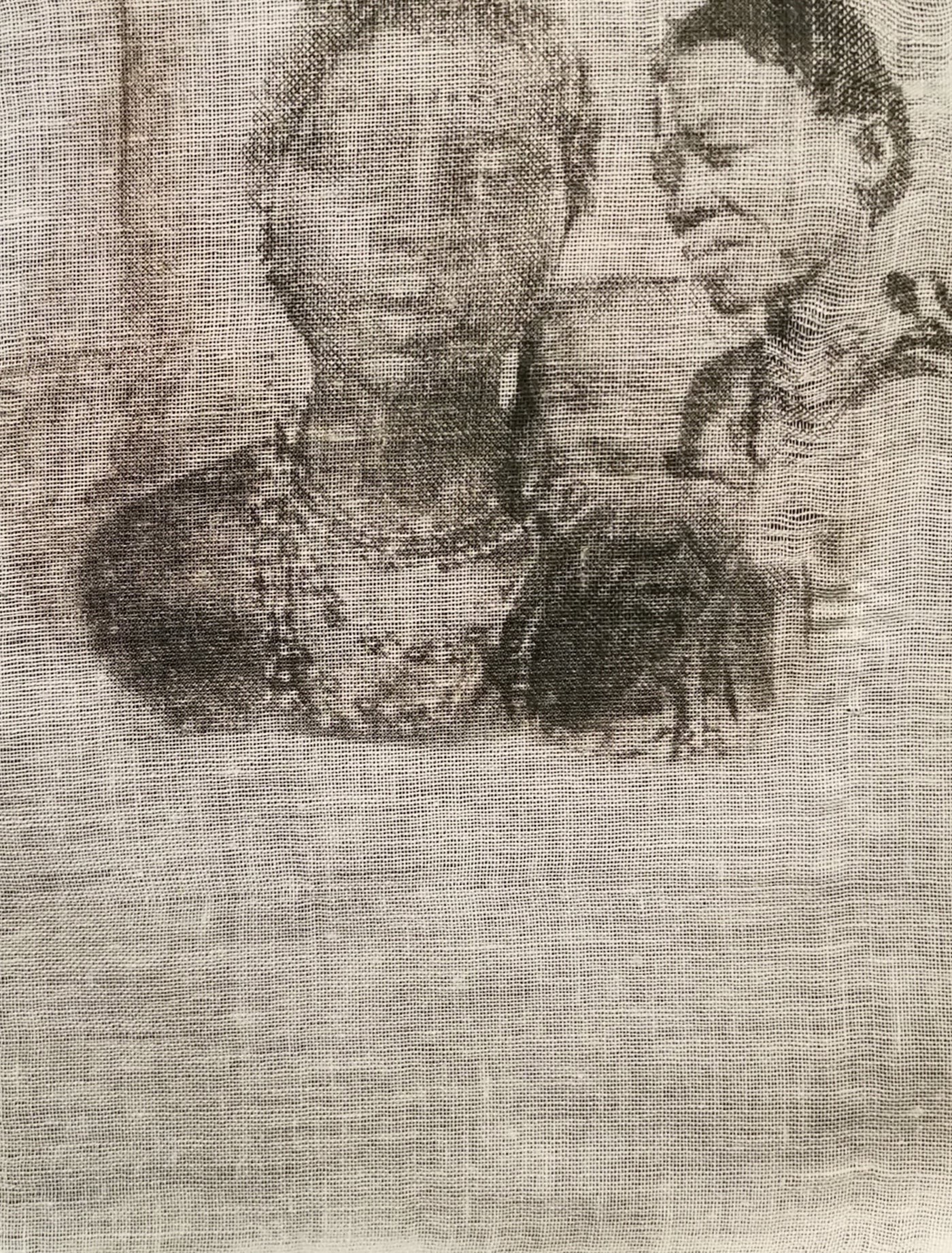
<figcaption> Binta Diaw, Nero Sangue. Courtesy the artist.
C&: Finally, could you tell us about AFR? It is a beautiful work on the bonds of family, identity, and the urge to belong.
BD: It is an installation that deconstructs and rethinks the word “Africa” and its complex geographic and cultural references. It is made up of three letters, AFR, written on the wall with a piece of rope. After these three letters, I place a piece of the same rope for the public to use – offering the possibility of continuing the word to go beyond all racist and stereotypical denominations that take us away from thinking differently and inclusively. Using the word “Africa,”we are not talking about a country but a continent of fifty-four countries, more than 2000 languages, and numerous religions and ethnic groups. This work is in line with what Binyavanga Wainaina wrote in his satirical essay How to Write About Africa (2006).
Binta Diaw is a Senegalese-Italian visual artist born in Milan in 1995. Her artistic practice consists of installations exploring migration and contemporary colonial narratives in the European context, connections between the body and nature, and the complexity of identity. She studied fine arts at Milan’s Accademia di Belle Arti di Brera and at Grenoble’s ÉSAD de Grenoble-Valence.
Elisa Pierandrei is a journalist and author based in Milan.
Read more from

MAM São Paulo announces Diane Lima as Curator of the 39th Panorama of Brazilian Art
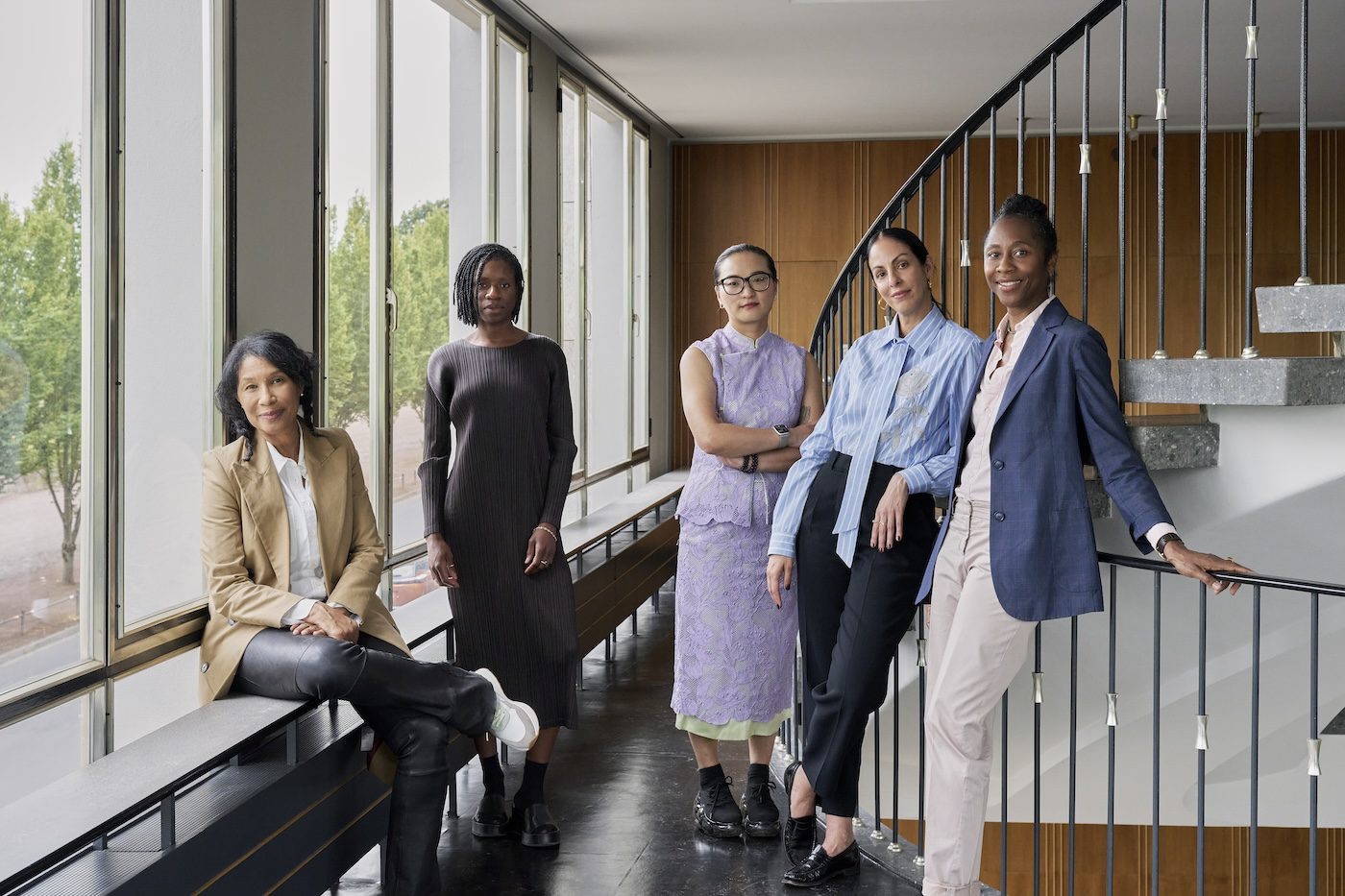
Naomi Beckwith Unveils Core Artistic Team for documenta 16
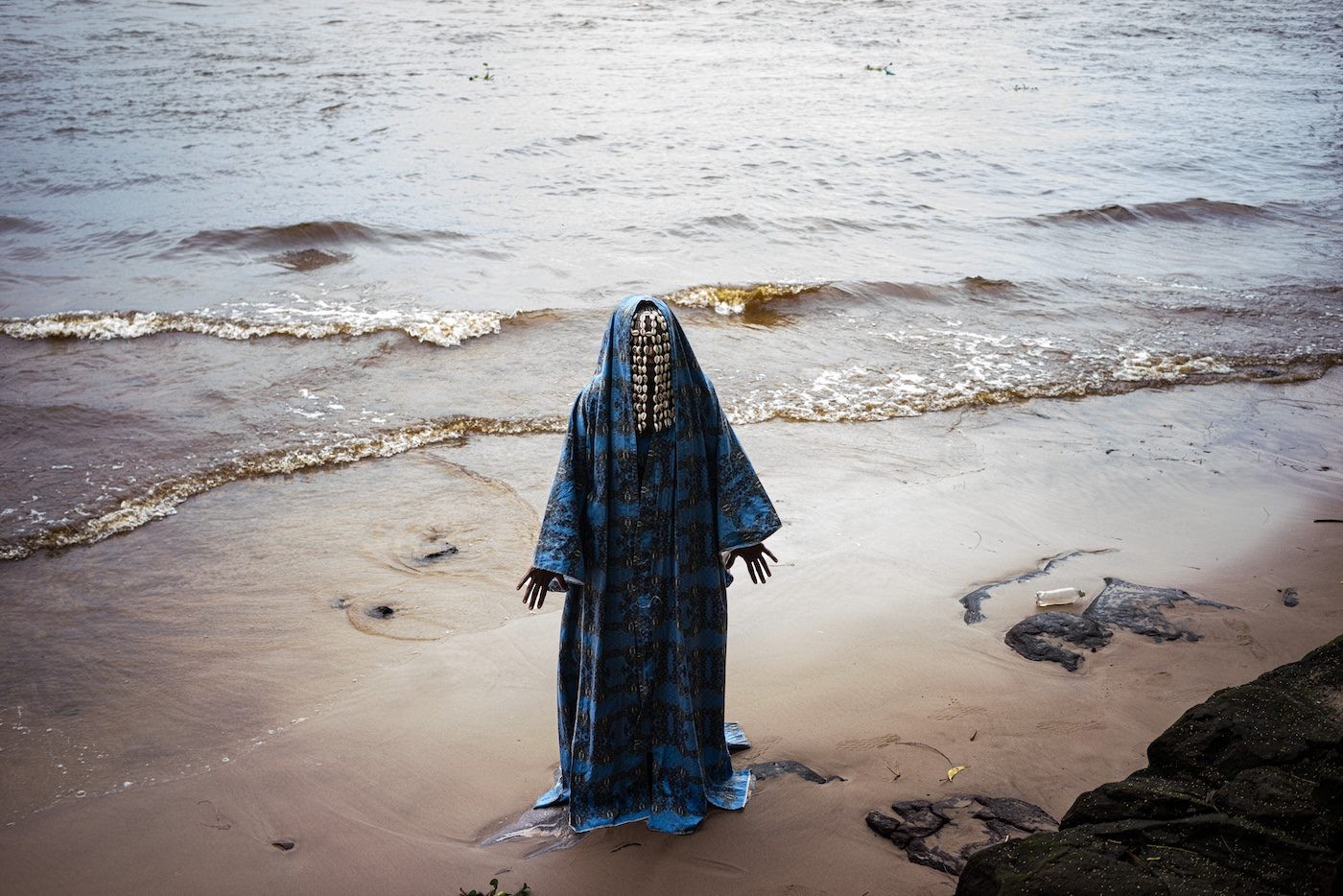
Fundação Bienal de São Paulo Announces List of Participants for its 36th Edition
Read more from

Flowing Affections: Laryssa Machada’s Sensitive Geographies

Kombo Chapfika and Uzoma Orji: What Else Can Technology Be?
